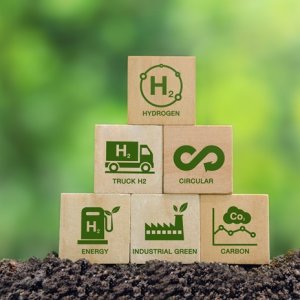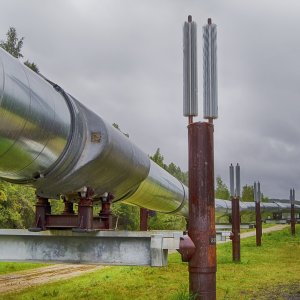
Hydrogen, Future Fuels: Chile Leading the Way in Latin America
 By Antonio Gozain | Senior Journalist and Industry Analyst -
Thu, 10/21/2021 - 06:00
By Antonio Gozain | Senior Journalist and Industry Analyst -
Thu, 10/21/2021 - 06:00
Although renewable energy development is usually associated with developed economies, Chile has an ambitious plan to tackle the energy transition, and is set to lead the way in Latin America by competing at a global level, aiming to take full advantage of the “huge potential” the country has, said Alejandro Mc Donough, Executive Managing Director, Wärtsilä Chile.
Following a thorough introduction regarding green hydrogen and future fuels led by Reetta Kaila, Director, Sustainable Fuels & Environment at Wärtsilä Energy, the Chile case became the spotlight of the Flexible Power Symposium Latin America & Caribbean 2021, when Mc Donough explained the combination of factors that have led to Chile’s energy infrastructure development, which include the country’s geography and natural resources, but also “good decisions” that were taken in the past, in addition to current regulations.
Chile’s renewable energy potential is 70 times its current capacity. This means a concentrated solar power capacity potential of 587 GW, photovoltaic potential of 879 GW, wind power potential of 295 GW and hydroelectrical power potential of 15 GW, according to the country’s Ministry of Energy.
Chile has committed to reach a 100 percent carbon neutral power system by 2050. The path to decarbonization sets high carbon emitting technologies to be retired by 2030, when the power system will be fully capable of serving the load without coal and diesel oil. By 2030, emissions will be cut by 80 percent, said Mc Donough.
The country’s ambitious plan is based on four pillars, explained the Ministry of Energy: retirement of carbon centrals and increasing renewables, energetic efficiency, electromobility and green hydrogen, which presents diverse challenges. Already over 40 projects have sprung in Chile, with over US$15 billion projected investments by 2030 and more than 15 projects with defined operations start date.
Apart from green hydrogen, other fuels are being developed, such as synthetic methane, green methanol and green ammonia. Although all of them present diverse transport and storage challenges, green hydrogen remains the most demanding one, said Kaila. “It is the whole value chain that you have to develop upfront. These fuels are very toxic and hydrogen is very explosive,” she says.
Additionally, hydrogen is the smallest molecule and it would “easily leak, even through steel,” said Kaila, and explained that in its liquid form, hydrogen is very difficult to transport and store. At -253 degrees Celsius, green hydrogen tanks must be isolated. The “more realistic” storage method would be in a compressed form; however, the volume will be doubled, explained Kaila, who said that “(green) methanol and ammonia are, in perspective, a bit better, because you can store them in liquid form in ambient condition. They are easier to fuel and treat.”
While opportunities can also be presented in other Latin American countries, such as Argentina or Brazil, the excess of energy in Chile opens bigger opportunities, mainly to export energy to the rest of the world, said Mc Donough. Opportunities, however, usually come with challenges. In this sense, Chile may face difficulties due to its distance to markets across the world, according to McKinsey & Company. Nevertheless, what will keep Chile competitive is the low cost of liquid hydrogen at port of destination estimated for 2030, which will be around US$1 per kilogram, said Mc Donough: “We are sure that we are going to get the lowest hydrogen production cost in the world.”
In regards to Mexico, the country has opportunities in green hydrogen as well. The Mexican Hydrogen Association was created in 2020, following a McKinsey report financed by the EU Hydrogen Council, “which found that Mexico would be able to produce green hydrogen at 65 percent of the cost, roughly US$1.4 per kilogram compared to US$2.3 in other countries, a rather stark difference,” said to MBN Israel Hurtado, President of the Mexican Hydrogen Association, who explained the advantages that Mexico’s geographic location and assets present, including the USMCA.
















